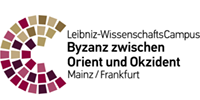For the sake of salvation and happiness in life: Studies on Byzantine pilgrimage and its origins
Pilgrimage sites were of great religious, political and economic importance in the Middle Ages. Questions of change in the sacred landscape of the Byzantine Empire, in the streams of pilgrims and in effects of political, economical and ecological aspects are reviewed with the help of targeted case studies.
Pilgrimage to a holy place enabled an immediate experience (Begreifen) of the history of salvation in situ as well as personal contact to the physical remains of holy women and men. It also served spiritual contemplation and fed the hope for transcendental help in life’s struggle.
In the course of over 1100 years of existence (beginning of 4th cent. – 1453) the Byzantine Empire underwent many changes both in terms of its territorial borders as in its politics. This also influenced the religious centres – the pilgrimage sites.
In order to study their development in relation to the political situation and to the expansion of the Byzantine Empire in a comprehensive way a project with the title „For the sake of salvation and a happy life. Studies in Byzantine pilgrimage and its origins” was presented to the Leibniz-Gemeinschaft (SAW) and its funding was applied for. The proposal was accepted at the end of 2012; its execution involves the departments Prehistory, Roman Archaeology and Early Middle Ages.
The project revolves around the following main topics:
- Which are the processes of change and development that pilgrimage underwent from its pre-Christian roots through the various periods of the Byzantine Empire and how can these be detected in archaeological evidence, in architecture and history of art?
- Which changes of sacred landscape or of streams of pilgrims can be evidenced and how is pilgrimage affected by political, economical and ecological aspects?
- Which regional peculiarities do pilgrim shrines show and how do they relate to the capital Constantinople?
Within this interdisciplinary project, one research group combines archaeological and material orientated fundamental research with cultural historical, archaeological, scientific and philological methods. At the same time, and in order to accompany the studies of the sacral topography and the networking of the Byzantine sanctuaries, GIS-data is collected and analyses are conducted to visualise supraregional contexts.
The results of the single studies are embedded in a synthesis and contribute towards a more differentiated conception of history. Beyond the SAW project further studies will contribute to the RGZM-research by adding chronological and spatial depth to the subject.
The project is part of the research field »cultural and social practices« of the RGZM and also part of the research programme of the WissenschaftsCampus Mainz.
Events
- Ringvorlesung zum Pilgerwesen (22. Oktober 2015 - 4. Februar 2016, Johannes Gutenberg-Universität Mainz)
- Conference »For the sake of salvation and happiness in life. Studies of Byzantine pilgrimage and its origins« (1.-4. Dezember 2015, Landesmuseum Mainz)
- Workshop »Alte Wege – neue Ziele? Das byzantinische Pilgerwesen im Wandel« (20. und 21. November 2014; Landesmuseum Mainz)
Online
→ Byzantine Pilgrimage: bibliographic database












